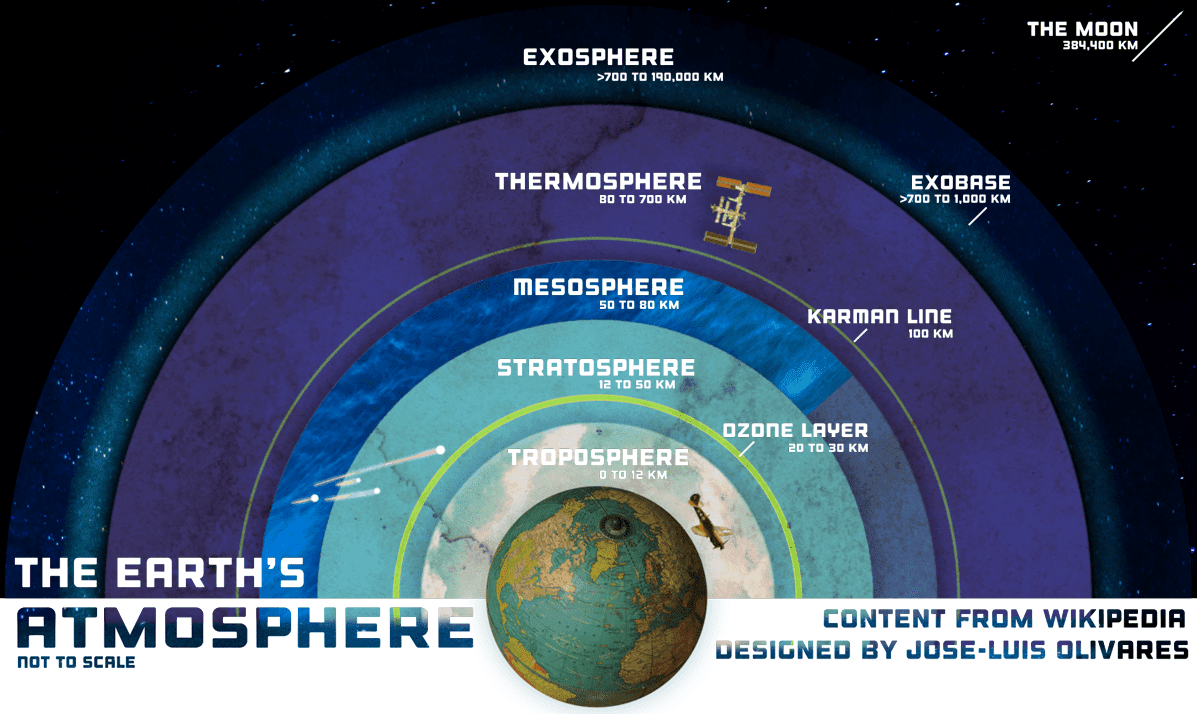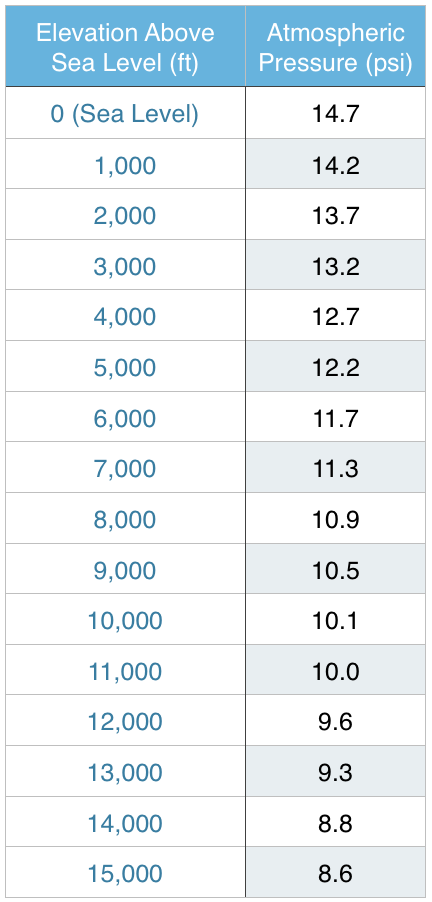- Exosphere: 700 km (440 miles)
- Thermosphere: 80 to 700 km (50 to 440 miles)
- Mesosphere: 50 to 80 km (31 to 50 miles)
- Stratosphere: 12 to 50 km (7 to 31 miles)
- Troposphere: 0 to 12 km (0 to 7 miles)
 |
| Gage from the Silca Superpista Ultimate |
I was recently at 11,000 ft elevation. While I was sucking wind running up a set of stairs, I started thinking about what happens to tire pressure when elevation increases or decreases. If you’ve read the title and these first few sentences, I bet you can guess what this article is about.
Pressure 101
Before we get started, here is a quick background on the different types of pressures.
Atmospheric Pressure
The Earth’s atmosphere is made up of five primary layers. These layers and their distances from sea level are as follows:
- Exosphere: 700 km (440 miles)
- Thermosphere: 80 to 700 km (50 to 440 miles)
- Mesosphere: 50 to 80 km (31 to 50 miles)
- Stratosphere: 12 to 50 km (7 to 31 miles)
- Troposphere: 0 to 12 km (0 to 7 miles)
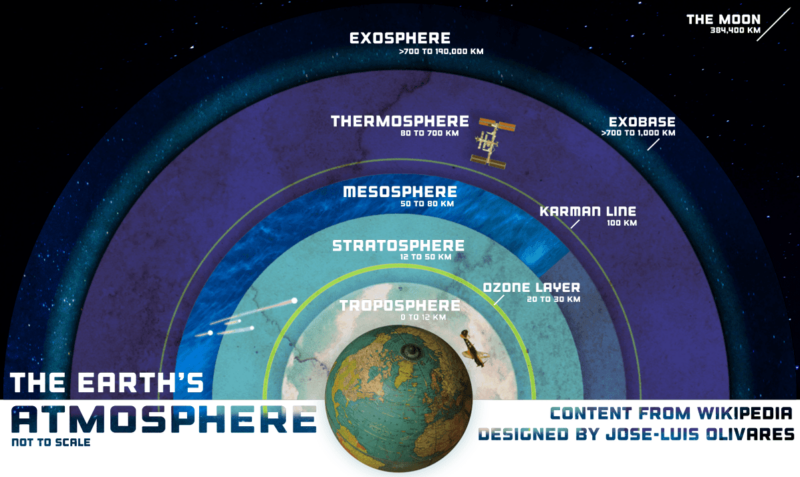
All of these layers contain gases and gases have mass. Assume that you were to create a tube that had a cross sectional area of one square inch. If this tube extended all the way to the top of the exosphere, gravity would act on all of the gas in the tube and pull it towards the surface of the earth. The pressure that would be exerted on the surface of the earth from this column of air is called atmospheric pressure.
If we were above sea level, say on a mountain top, then the column of air would be shorter and therefore would exert less pressure on the surface. If we were below sea level, say in Death Valley, then the column of air would be longer and the pressure would be greater. Since tire pressure is measured in psi I will use state atmospheric pressure in psi. Here is a list of atmospheric pressures at different elevations.
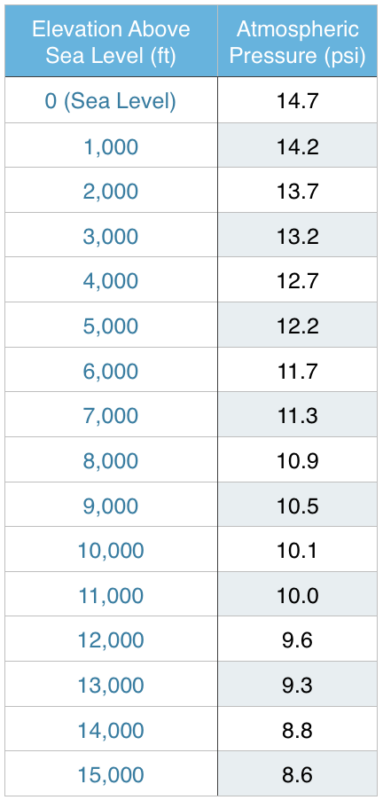
Gage Pressure
When you use a tire pump you are reading the pressure from a gage. This gage value is the pressure increase (order decrease, technically a vacuum) over the atmospheric pressure. If you have a deflated tube at sea level, the pressure inside the tube and outside the tube is 14.7 psi. If you were to hook up your pump you would read a value of 0 psi. The minute you start pumping, you increase the pressure on the inside of the tube relative to the pressure outside the tube. This difference in pressure is what you are reading on the pump’s gage.
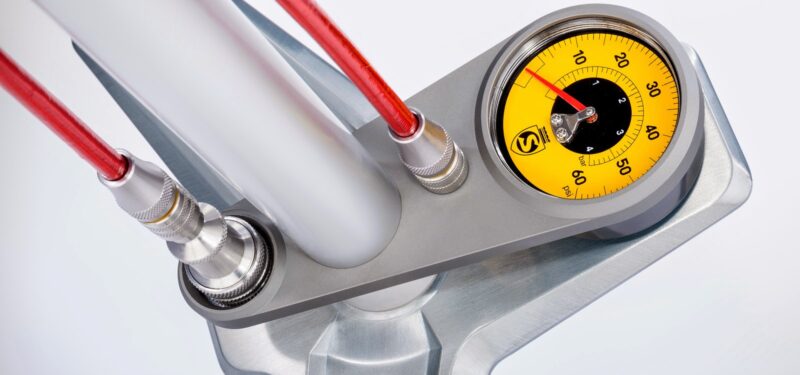
How Tire Pressure Changes As Elevation Increases Or Decreases
The easiest way for me to visualize what happens when we increase or decrease elevation is to assume we start at one elevation with 0 psi in gage pressure. Let’s say that we have a tube at 0 psi at sea level. The atmospheric pressure outside and inside the tube is 14.7 psi. Now let’s close the tube and head to a higher elevation. As we increase the elevation, the atmospheric pressure outside of the tube decreases but the pressure inside the tube stays at 14.7 psi. If the pressure outside of the tube is lower then the gage pressure would increase. Remember, gage pressure is the increase in pressure over atmospheric pressure.
We can assume that the tube is sealed. Even though the gage pressure has increased we haven’t added any air to the tube.
The same is true if we start at a higher elevation and move to a lower one. If the tube was inflated to a gage pressure of 90 psi at 10,000 feet and we moved down to sea level, the gage pressure would now read 85.4 psi.
How Important Is Tire Pressure And Elevation
To be honest, the differences in psi over a 15,000 ft range is quite small. When you take tire pressure and temperature into consideration, the difference is even smaller. Ultimately, if you ever find yourself thinking about the psi of your tires as you change elevations on your ride, know that it’s nothing to worry about.

Co-founder at FLO Cycling. Jon manages the day to day operations and acts as the lead engineer for all FLO products.

